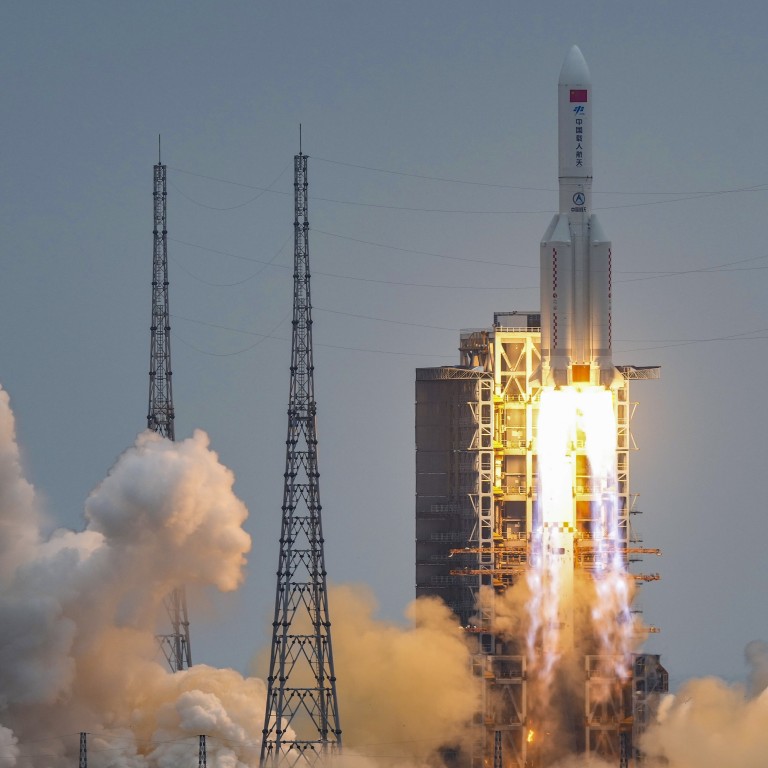
Eyes on sky as China’s Long March rocket wreckage falls back to Earth
- Debris expected to make landing in international waters, Chinese analyst says
- Authorities are tracking the projectile and most of it will burn up on re-entry, according to industry insider
Astrophysicist Jonathan McDowell, from the Harvard & Smithsonian Centre for Astrophysics in the United States, said “we don’t know where” the re-entry would take place.
“[It would be] at worst like a small plane crash but stretched out in a line over hundreds of kilometres,” German news agency DPA quoted McDowell as saying on Tuesday.
It was uncertain how many fragments would remain after re-entry, he said, “but enough to cause damage”.
Industry news site SpaceNews said the “more likely possibility” was that the core stage would fall in an uninhabited area such as an ocean.
“The odds of a particular individual being hit by space debris are exceedingly low, once estimated at 1 in several trillion,” the site said.
China approves bid to build fifth rocket launch site as Zhejiang province fires up for space boom
A source working for China’s manned space programme said most of the debris would probably burn up while entering the atmosphere because all that remained was little more than an empty shell.
“China has been closely monitoring the movement of the debris … The possibility of being hit by this debris is far lower than being involved in a car accident,” the source said, adding the projected landing zone of the debris was confidential.

03:12
China successfully launches first module of its ambitious Tiangong Space Station
Song Zhongping, a former instructor with what became the Chinese military’s rocket corps, said the debris would fall in a safe place such as international waters or an uninhabited part of the country.
It was the largest craft to crash to Earth since the US space laboratory Skylab scattered debris over the southern Australian town of Esperance in 1979.
China is expected to carry out more launches in its space station programme in coming weeks as it aims to complete the project next year.
But at 15 years old, the ISS is ageing. Astronauts have had to spend more time finding and patching holes in the space station and Russia plans to quit the project in 2025.
The Tiangong is expected to be the only space station operating in near-Earth orbit by the end of the decade.


